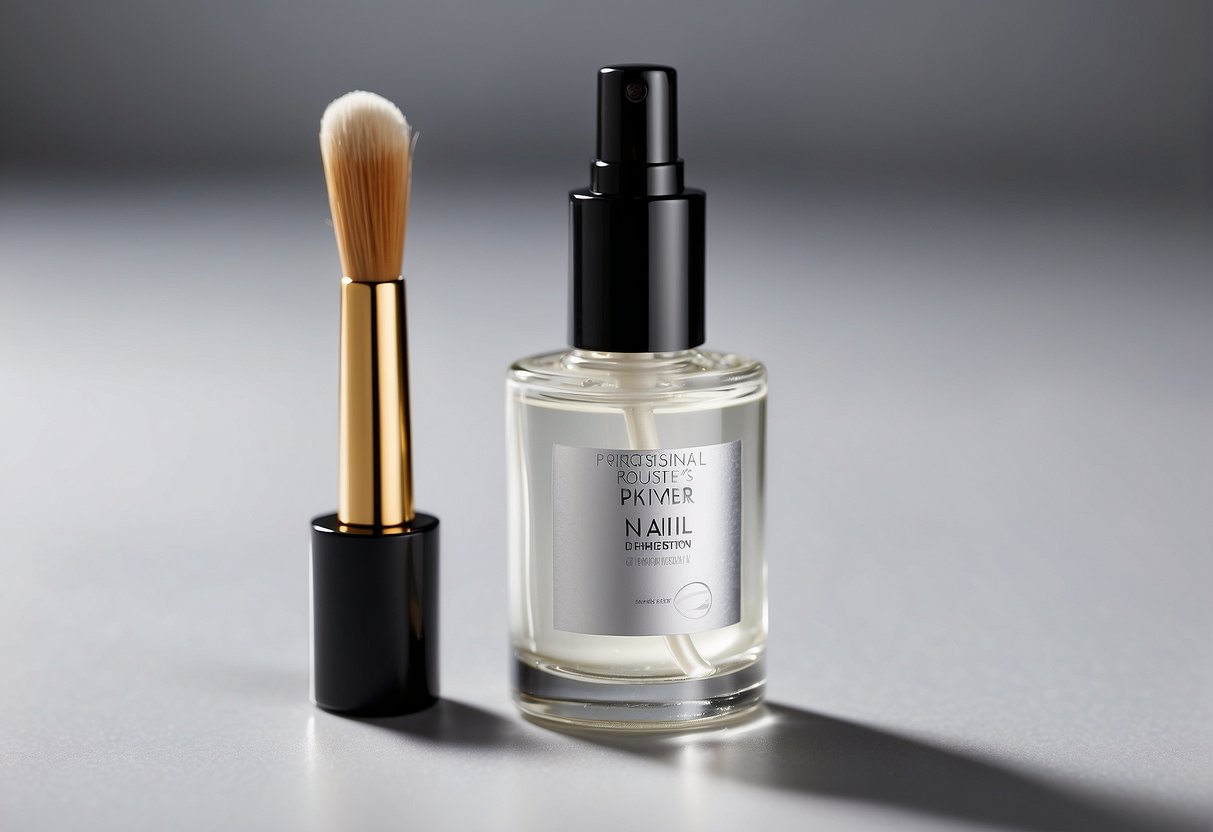Explore the realm of flawless nails with our newest beauty insight: “What is Nail Primer and Why You Need It 2024: Experts Explain.” Unveil the techniques used by professional nail technicians to achieve a seamless polish application and enduring durability.
What is Nail Primer?
Importance of Nail Primer
Imagine having your beautifully crafted nails lift or chip off prematurely — frustrating, right? That’s where the magic of nail primer steps in. It’s a bonding agent that prepares your natural nails by creating an ideal surface for adhesion. This extends the life of your nail enhancements and prevents potential damage to your natural nails. Without primer, you’re missing out on the full potential of a lasting, professional-looking manicure.
- Acid-Free Primer: A gentle yet effective option that avoids the strong chemicals found in other types.
- Non-Acid Primer: Perfect for you if you’re sensitive to stronger acid-based primers but still want excellent adhesion.
- Acid Primer: The traditional choice for unbeatable bonding, particularly suited for acrylics.
Types of Nail Primers
Navigating the world of types of primer can be overwhelming, but it’s simpler than you think. You’ve basically got two paths: acid-based and acid-free. Acid-based primers create a stronger bond by chemically etching the nail surface, while acid-free nail primer is less aggressive, working instead by removing oils and moisture to ensure a clean canvas without the harshness.
Adhesion and Primer Technology
The science behind how to use nail primer is fascinating. It fundamentally alters the pH balance of your nail to achieve enhanced adhesion.
- Step 1: Start with clean, prepped nails.
- Step 2: Apply a thin layer of your chosen primer formula.
- Step 3: Allow it to dry completely — this sets the stage for your acrylic or gel to adhere flawlessly.
Remember, the right nail primer and its innovative formula not only improve adhesion but also protect your natural nails, all while extending the life of your beautiful manicure.
Preparation and Application of Nail Primer

Procedures and Techniques
Before you start the primer application, ensure your nails are clean and free of oils. Begin with gently pushing back the cuticles and removing any non-living tissue. Use a nail file to shape the natural nails and buff the surface of the nail bed lightly; this process is known as etching, and it helps the primer bond better.
Once the nails are shaped, sweep over them with a lint-free wipe soaked in nail prep dehydrator to remove any residual moisture and oils. Now, it’s time for the primer:
- Dip your primer brush and wipe off excess product.
- Gently apply a thin layer of primer on the nail bed.
- Avoid the skin and ensure full coverage.
- Wait for it to air-dry, which typically takes about a minute or two.
Applying the primer correctly is crucial; too much can compromise the nail’s health, and too little might lead to lifting of the nail enhancements.
The Role of Dehydrators and pH
The success of your nail enhancements also hinges on the pH balance of your nails. Natural nails often carry excess moisture and oils, which can lead to nail enhancements peeling off prematurely.
Dehydrators and pH balancing agents play a significant role. The dehydrator strips the nail beds of oils and brings down their pH to a level more suitable for the adhesive qualities of primers and gel polishes. Applying a dehydrator is a straightforward step: just apply a coat over the nails and let it air dry before moving on to priming. It ensures your nail beds are perfectly prepped for the next steps, be it a base coat for a gel polish application or an adhesive layer for acrylic nails.
Maintenance and Safety of Nail Primers
Nail primers pave the path for longer-lasting manicures by ensuring better polish adhesion to your nails. Let’s explore how you can extend the life of your manicure while considering safety practices to avoid any risks such as irritation or chemical burns.

Extending the Life of Your Manicure
To maximize longevity and guard against premature lifting, applying nail primer correctly is crucial. Here’s how:
- Step 1: Apply a thin, even layer of primer, making sure it spreads naturally over the nail. Avoid using too much product to prevent weakening the bond.
- Step 2: Give the primer sufficient time to dry; this should only take a minute or two.
These steps help secure your manicure and delight in its endurance!
Health Considerations and Risks
Your enthusiasm for a durable manicure should always be balanced with mindfulness about health considerations and potential risks:
- Harsh Chemicals: Be aware that some nail primers contain corrosive ingredients like Methacrylic acid, which can cause chemical burns or irritation. Always opt for acid-free primers when you can for a safer experience.
- Skin Contact: Try to keep the primer on your nails only. If any lands on your skin, wash it off immediately to prevent irritation.
Frequently Asked Questions

Discover how to master your manicure with the transformative power of nail primer. Unveil the secrets behind durable, vibrant nails and the savvy use of this essential product.
How does nail primer enhance the adhesion of my manicure?
Nail primer acts as a double-sided tape for your nails, ensuring that the polish or enhancement adheres firmly to your natural nail. Applying it creates an optimal surface for your manicure, leading to a more durable and long-lasting finish.
Can nail primer be used with all types of nail enhancements?
Yes, nail primer is versatile and can be used with various nail enhancements including acrylics, gels, and fiberglass. It’s your go-to prep step for any nail service you choose, contributing to a flawless manicure.
What’s the difference between acid-based and acid-free nail primers?
Acid-based primers work by etching the nail plate to create a stronger bond for nail enhancements, while acid-free primers are less aggressive and suitable for those with sensitive nails. Knowing your nail type can help you choose the right primer for your manicure needs.
What alternatives can be utilized if I run out of nail primer?
In a pinch, a combination of isopropyl alcohol and acetone can create a clean base for your nail polish. Although not as effective as a dedicated primer, this mix can help remove oils and moisture, prepping your nails for polish.
What are the consequences of skipping nail primer in a nail routine?
Omitting nail primer can lead to your nail enhancements lifting, chipping, or peeling prematurely. This foundational step is vital for manicure longevity and prevents potential nail service failures.
How does nail primer compare to traditional base coats in function?
While both nail primer and base coats provide a preparatory layer for nail color, primer is specifically formulated to create a chemical bond between your natural nail and the enhancement. A base coat, on the other hand, primarily smoothens nail imperfections and prevents staining.
What is the purpose of nail primer?
Nail primer is used to remove moisture and oils from the nail, creating a sticky layer that enhances the adhesion of acrylics or gel polish.
Do you really need nail primer?
Yes, nail primer is important for ensuring a strong bond between the nail and products like gel or acrylic, leading to a more durable manicure.
Is nail primer the same as a base coat?
No, nail primer is not the same as a base coat. Primer prepares the nail for adhesion, while base coat is the first layer of polish for color adhesion and protection.
What can I use as a nail primer?
You can use an extra layer of base coat or rubbing alcohol as a temporary substitute for nail primer, but these may not be as effective.
If you liked this blog article about the question: “What is Nail Primer”, don’t forget to leave us a comment down below about what you think of the article and whether it inspired you.



